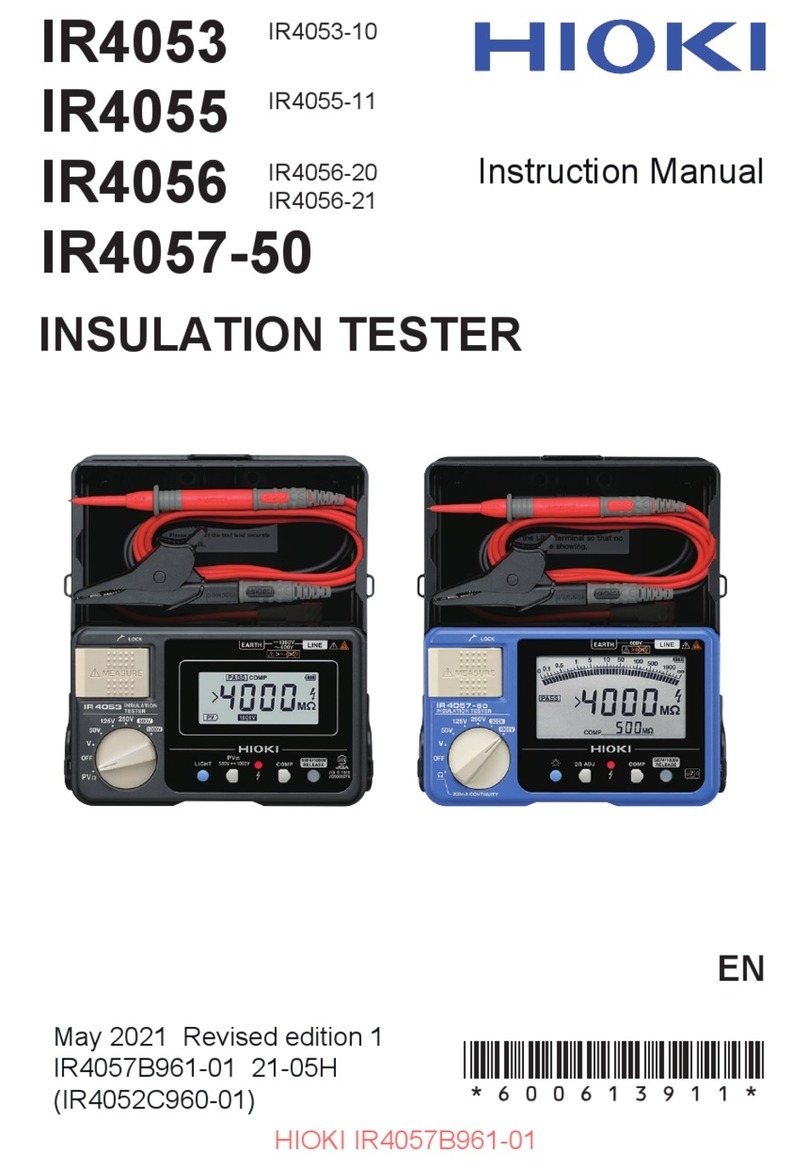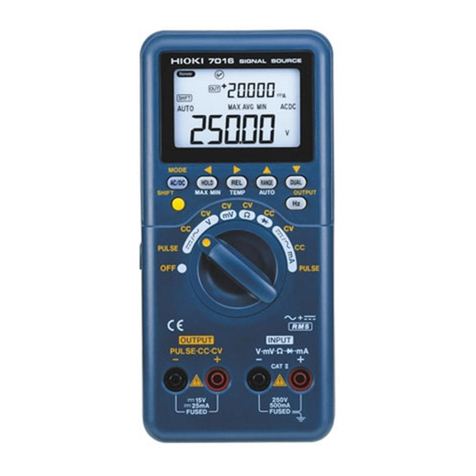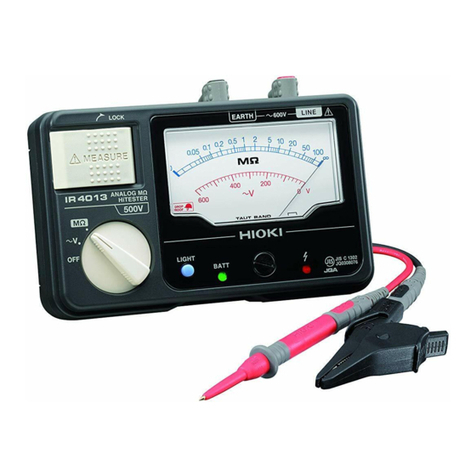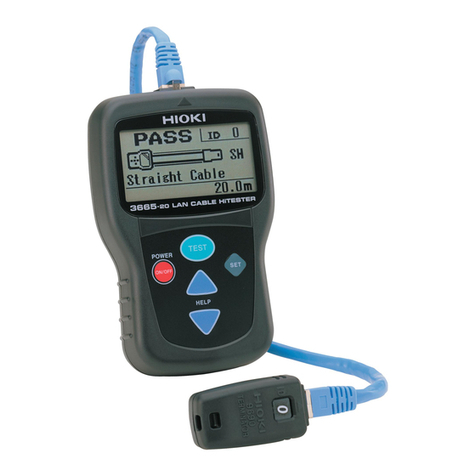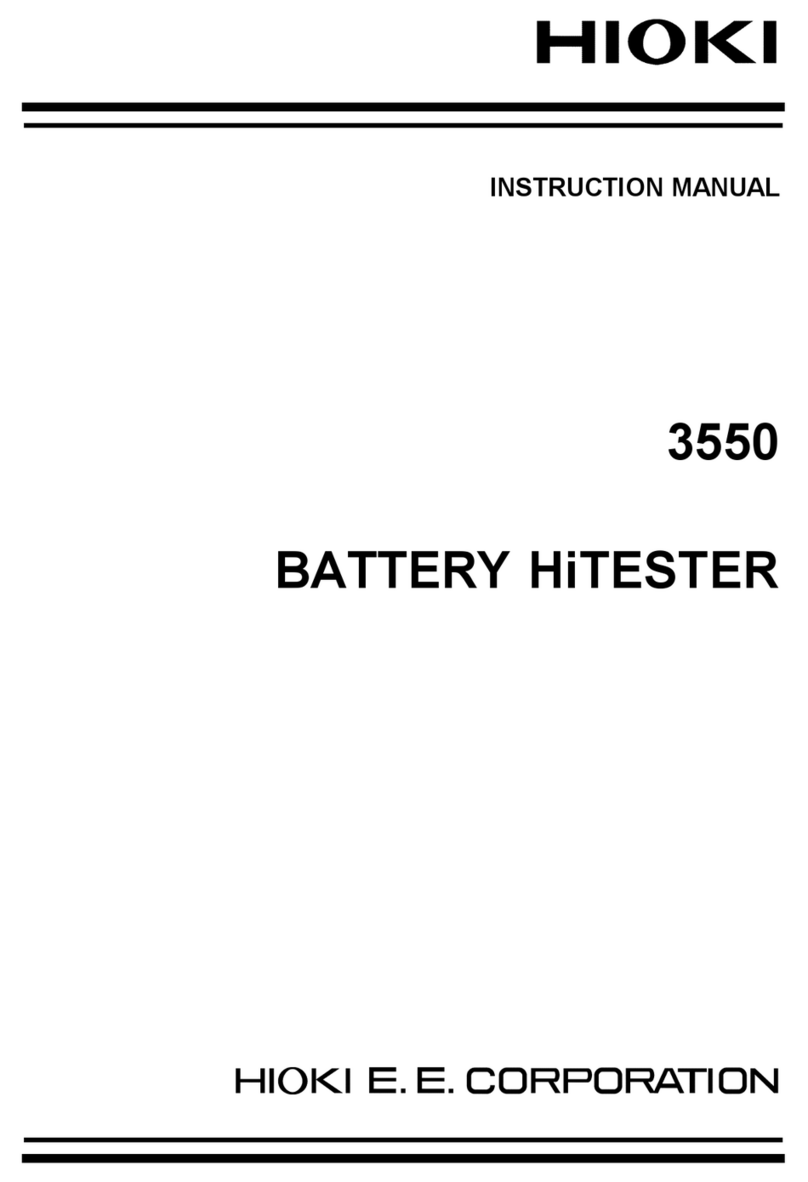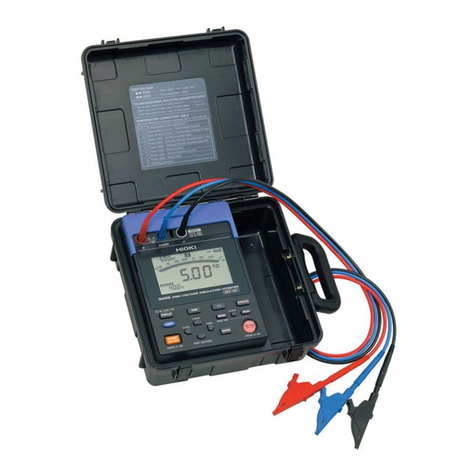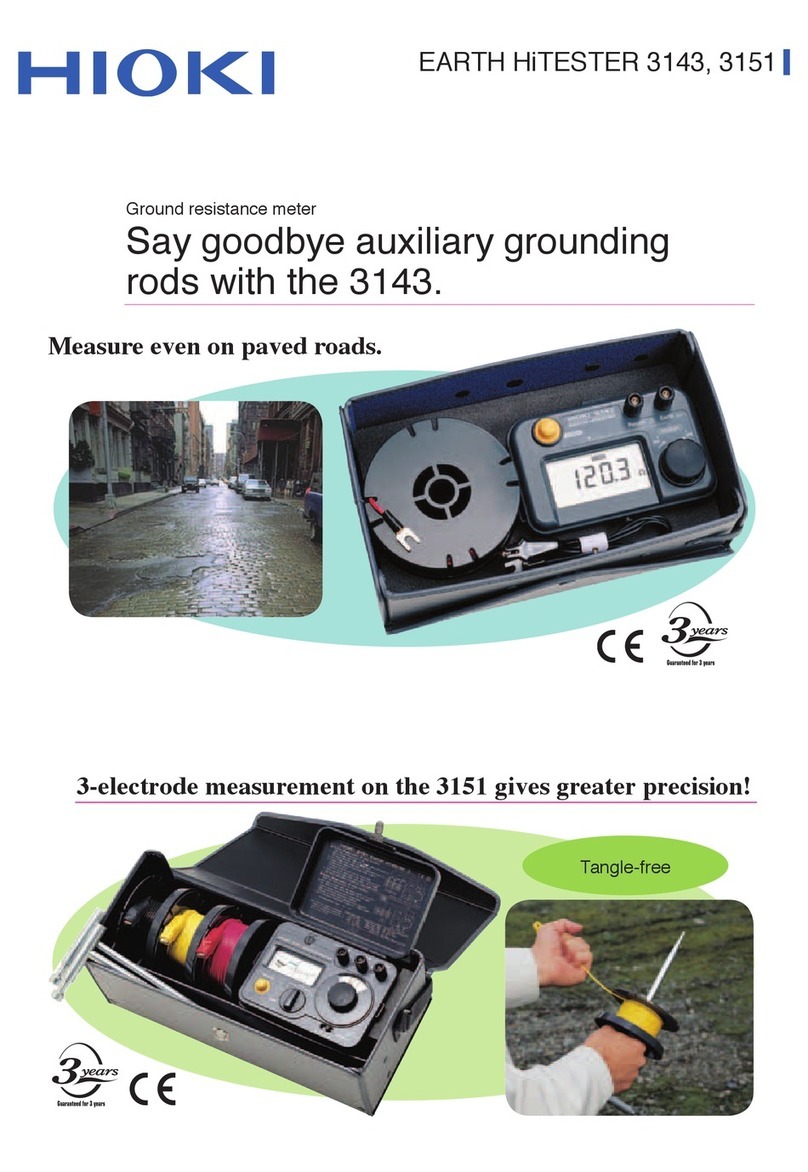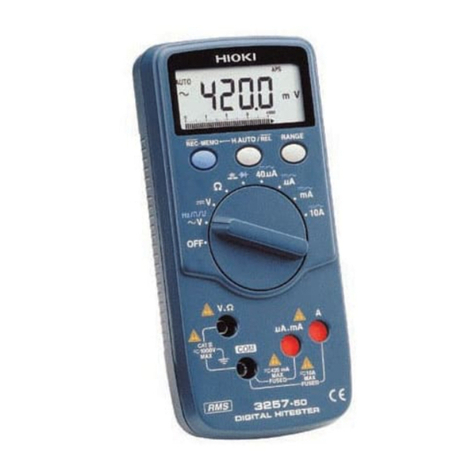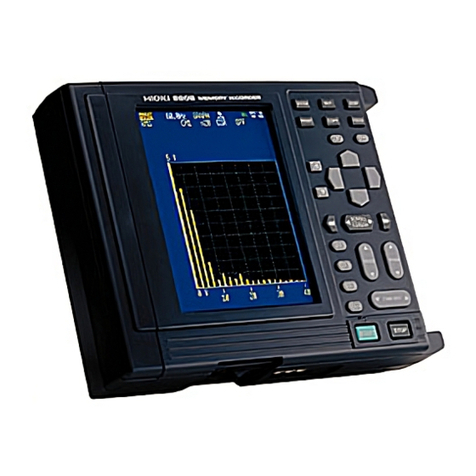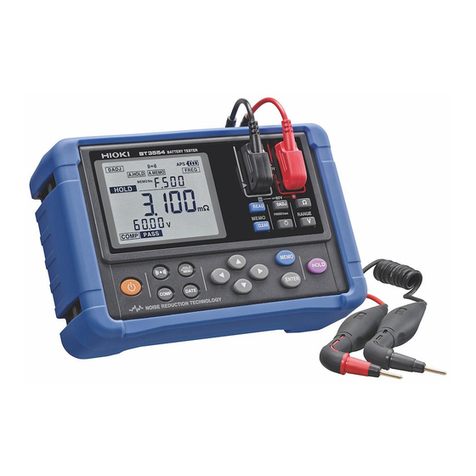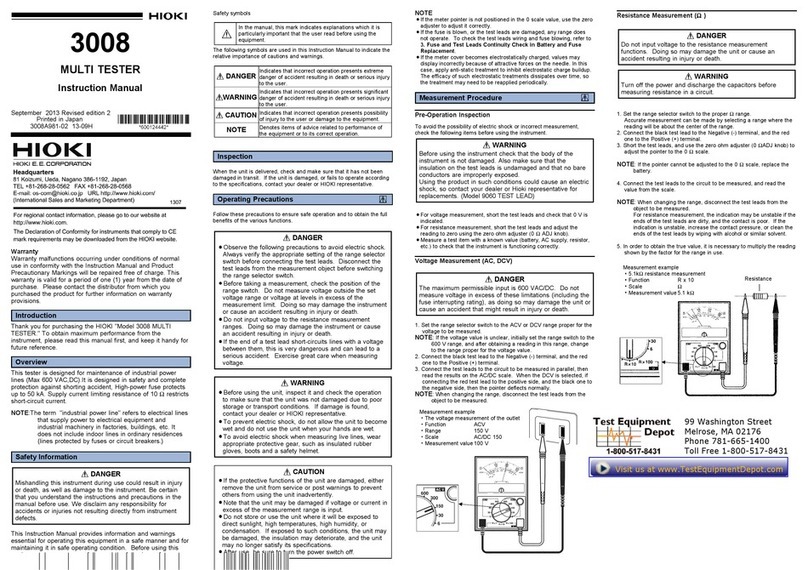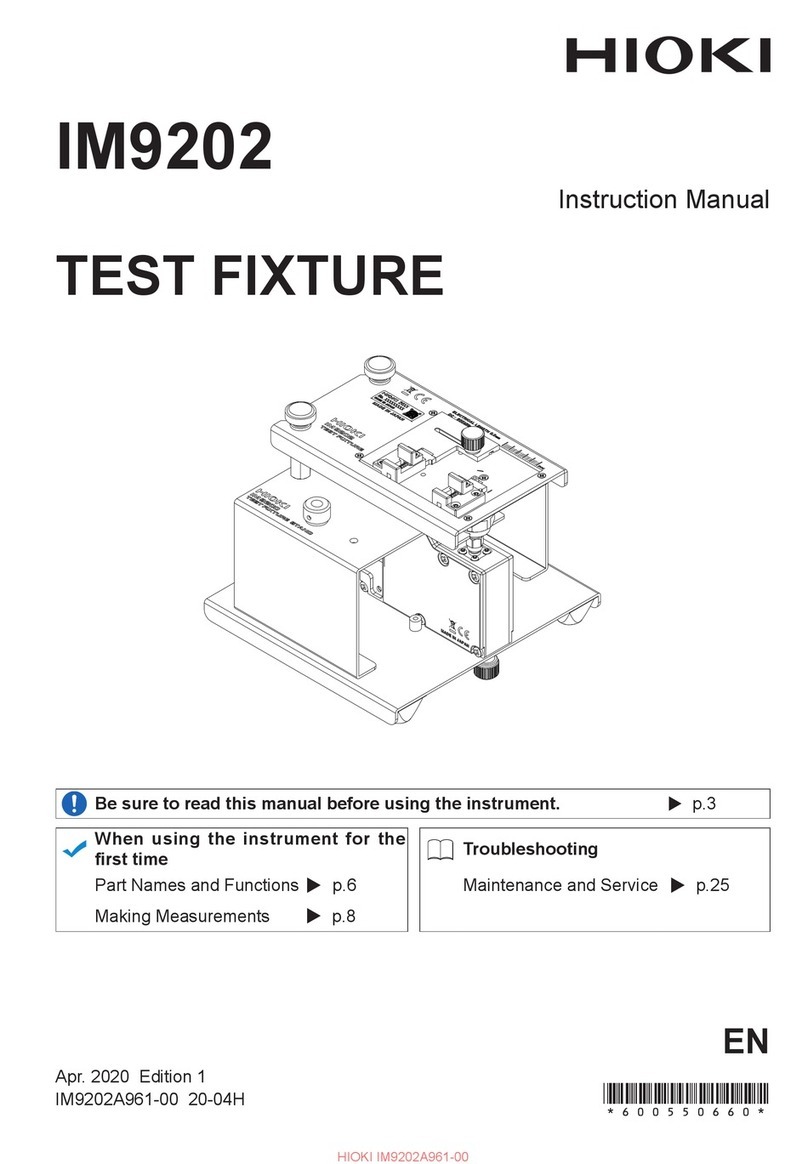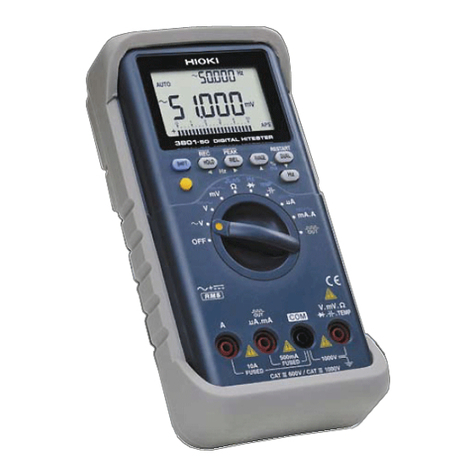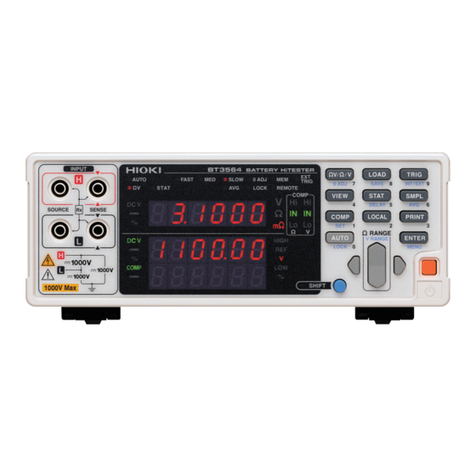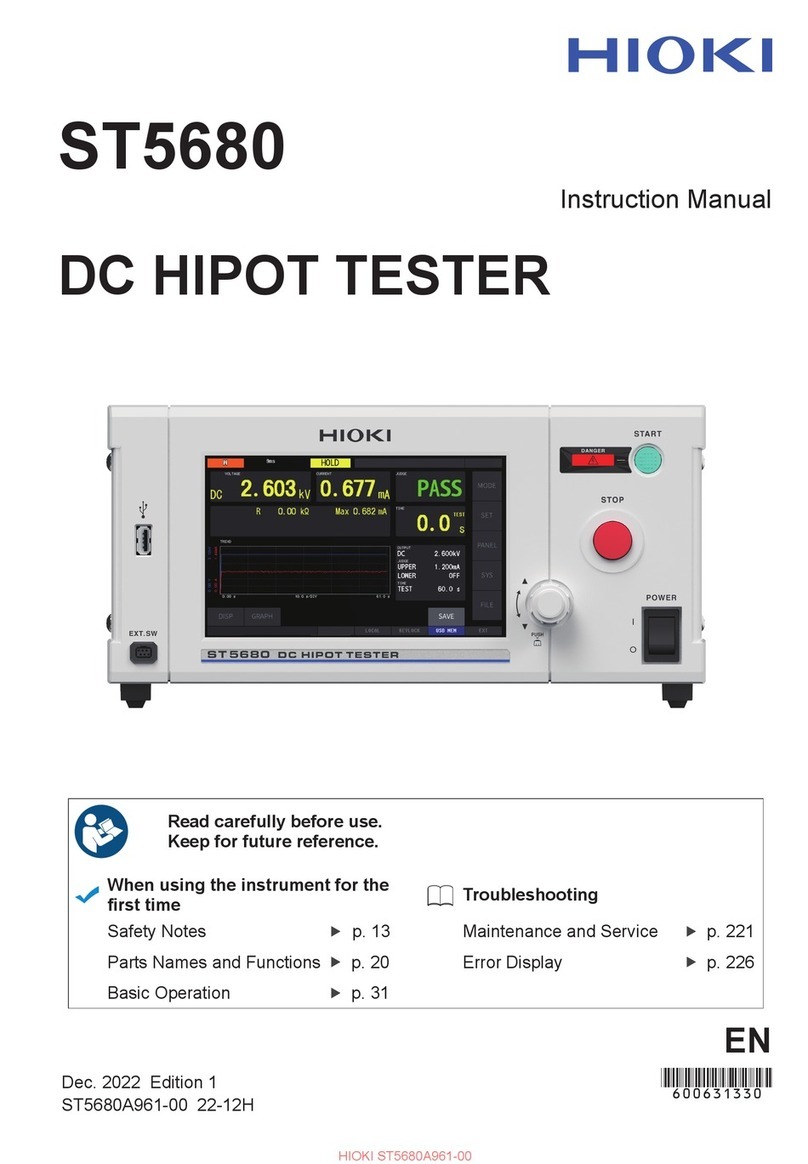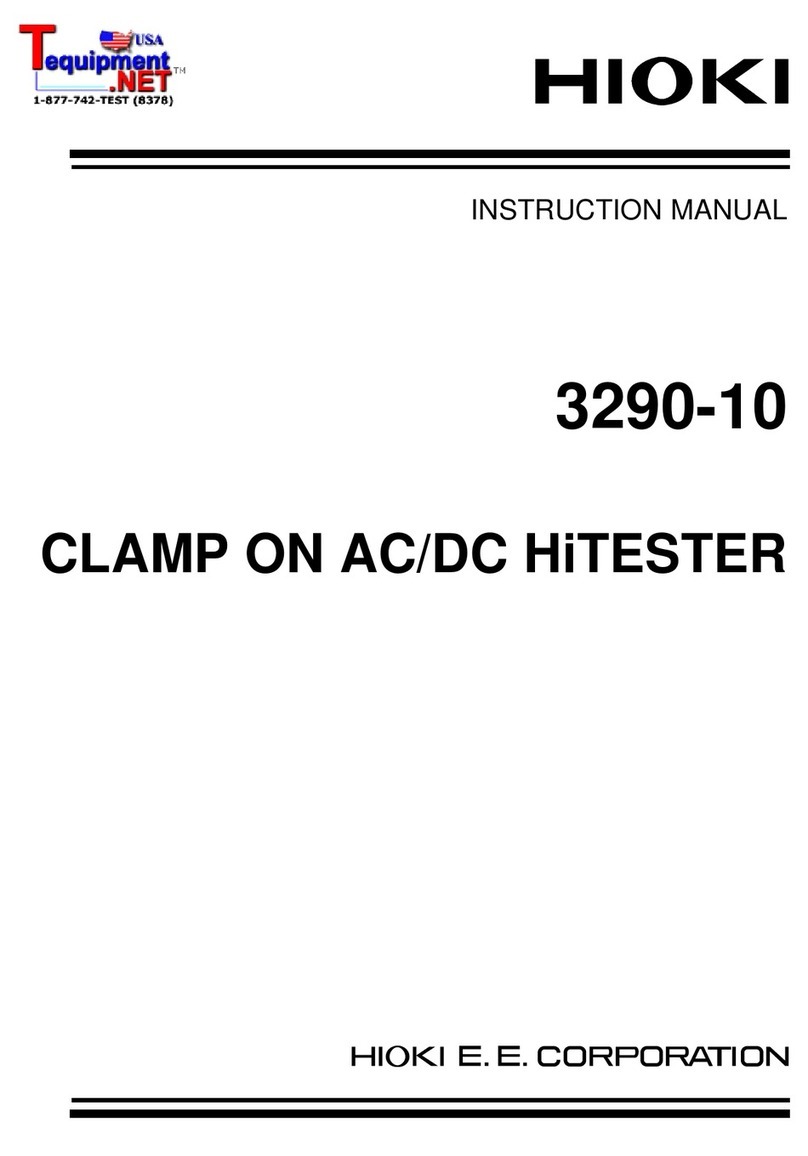
2
Options (sold separately)
Options (sold separately)
The following options are available for the instrument. Contact your
authorized Hioki distributor or reseller when ordering.
L9787 Test Lead
(for simplied measurement method,
indoor use only, red and black 1.2 m each)
L9840 Auxiliary Earthing Rod
(for precision measurement method, 2 pcs in 1 set)
(φ 6 mm, entire length of 270 mm, straight
section 235 mm, material: stainless SUS304)
L9841 Measurement Cable
(for precision measurement method,
alligator clip, black 4 m)
L9842-11 Measurement Cable
(for precision measurement method,
yellow 10 m, equipped with winder)
L9842-22 Measurement Cable
(for precision measurement method,
red 20 m, equipped with winder)
L9843-51 Measurement Cable
(for precision measurement method,
yellow 50 m, equipped with at cable winder)
L9843-52 Measurement Cable
(for precision measurement method,
red 50 m, equipped with at cable winder)
L9844 Measurement Cable
(for earthing terminal board, alligator clip,
3 cables in 1 set, red/yellow/black 1.2 m each)
9050 Earth Nets
(2 sheets in 1 set, 300 mm × 300 mm)
C0106 Carrying Case
